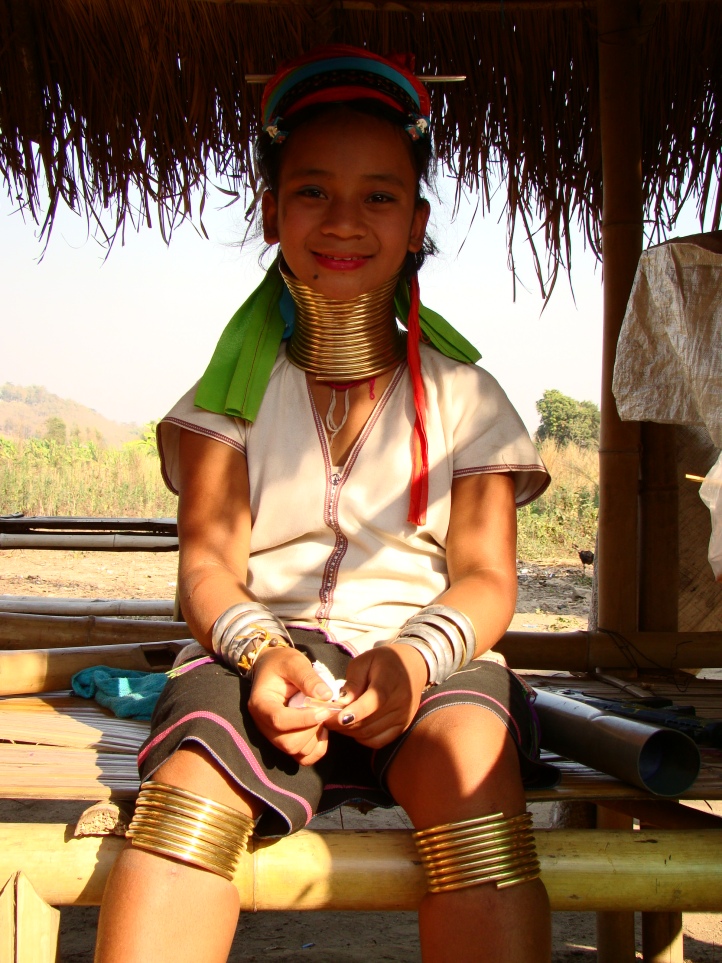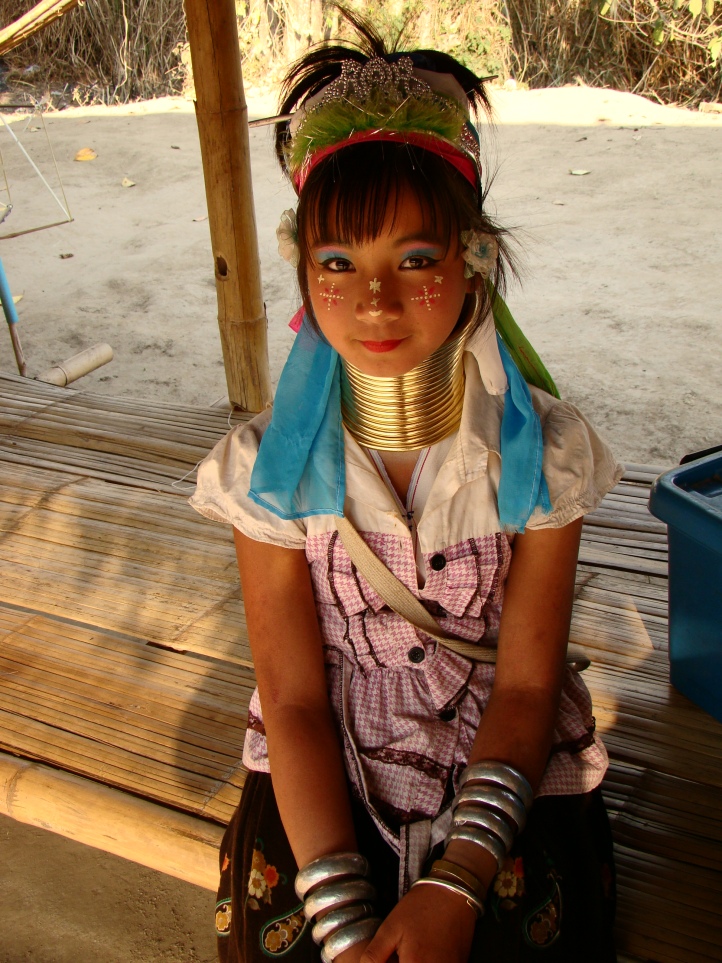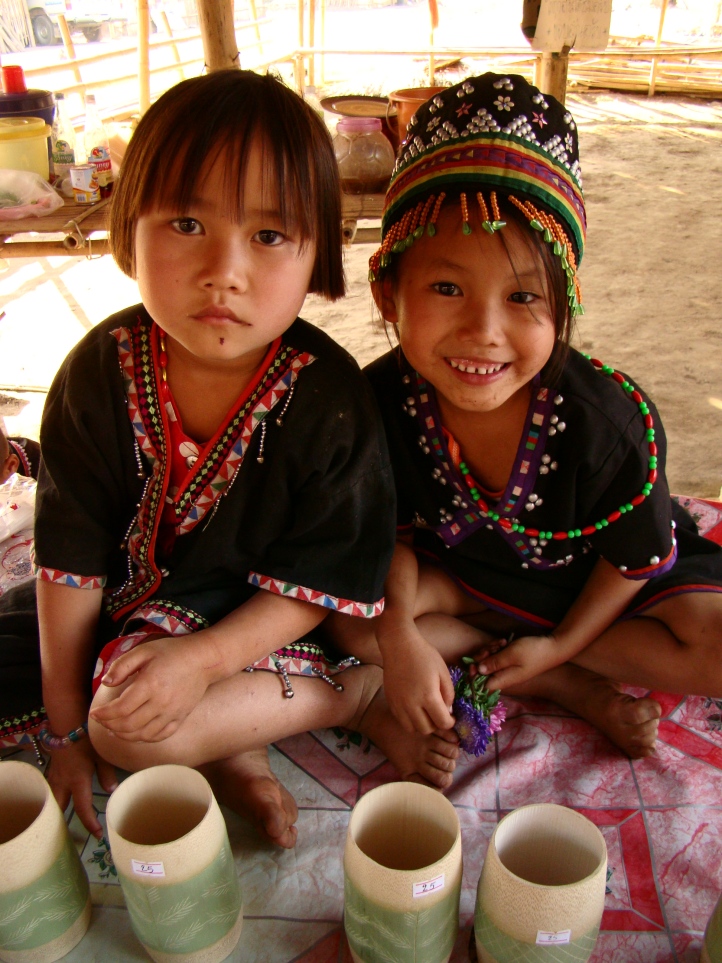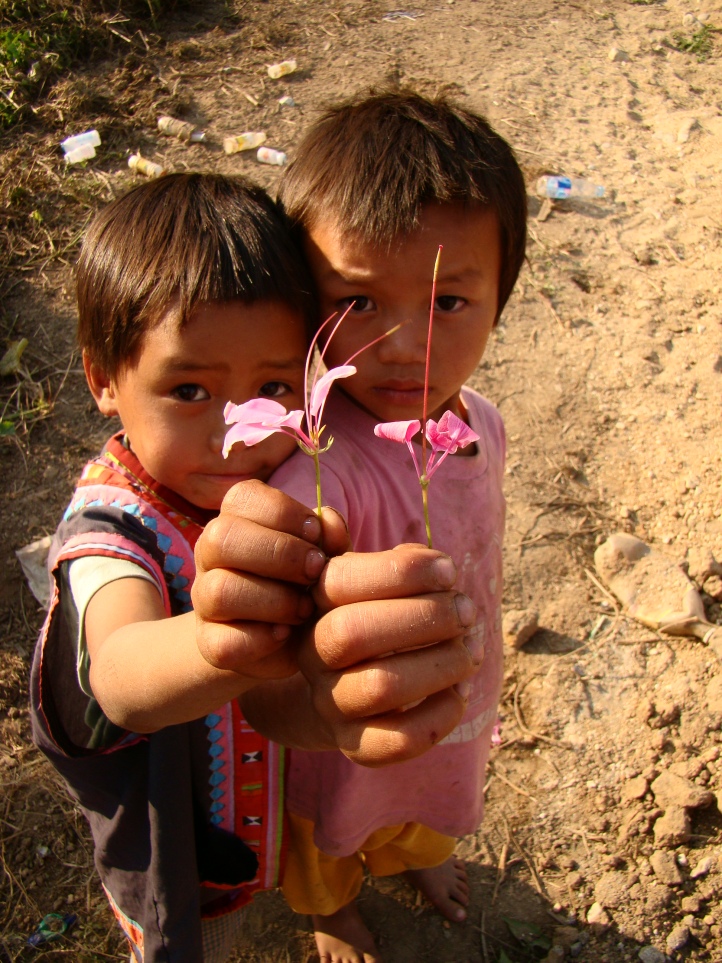In my earlier years of travel I would often only read about the ethical concerns about certain places after I had been there. These days I try to be informed before I go on an adventure to see the most popular tourist attraction of the area. For a lot of people, seeing the giraffe-like, long neck women is just another stop on their Thailand adventure. Many tourist agencies make a quick stop at these hill villages so that tourists can have a quick photo opportunity with exotic-looking women before being shuttled on to the next destination.
But do you know who these woman are? And the biggest question is, should you support this controversial tourism attraction?

Over two decades ago, a civil war caused the Kayan residents to flee Myanmar. Thailand granted them temporary stay under “conflict refugee” status, but now they live in guarded villages on the northern Thai border.
What makes the Kayan woman unique is their custom of wearing rings to create the appearance of a long neck. This exotic tradition inspired the creation of tourism villages in 1985. Unfortunately, without citizenship, Kayans have limited access to utilities and aren’t allowed to resettle outside of these tourist villages. This is because the Thai government claims they are economic migrants and not real refugees.

Starting at the young age of four or five, Kayan long neck women wear these rings, adding more annually as they acclimate to the increased weight. These coils weigh up to 25 pounds and depress the chest and shoulders. This creates the illusion of a disembodied head hovering over a shimmering pedestal of gold rings. Contrary to popular belief, the coils don’t lengthen the neck itself and thus can be removed without the neck snapping. Yet, women still wear these coils year round, even while sleeping.

The origin of the tradition is a mystery even to the Kayans. An ancient legend claims rings protected villagers from tiger attacks, since the cats attack victims at the neck. Another theory said the rings helped ward off men from rival tribes by lessening the women’s beauty. Today, people believe the opposite– the longer their neck, the more beautiful the woman. It is true that some women enjoy upholding this tradition but others feel pressured to endure the painful custom to make a living.

An estimated 40,000 tourists per year pay between $8-16 to stop by these hill tribe villages to gaze upon the women’s unusual appearance and take pictures. Unfortunately, the entry fee is rarely dispensed to the villagers directly. Instead, the long neck woman have to sell trinkets, crafts and photo-ops to make a living, essentially working in a live-in gift shop. The women are known for their tremendous weaving skills which is done on a backstrap loom. You can witness them practising their impressive craft while getting to know them. While some say the villages give Kayans a paid opportunity to retain their culture, others condemn this arrangement for exploiting stateless women and children in exchange for tourist dollars.

Here is my answer to the big question of, can you justify ethical travel to these villages?
Yes, just do your research. Most women view tourist visits as a way to make a living since their non-resident status limits employment opportunities. However, sensationalizing dress, customs, and unique traditions of these people mean nothing if they are not treated with respect.

Here are some recommendations for when you visit:
1. Do some research and find a responsible tour company that will promote a socially responsible visit.
2. Make sure your money benefits the village directly instead of third party companies. Support the women by purchasing their handicrafts and by paying a fair price for their beautiful handwork.
3. Don’t just stop by for a photo shoot. Learn about the people and hear their stories.
4. Consider volunteering in a village if you are staying in Thailand for a while.

The goal of travel shouldn’t be taking pictures of exotic things to brag about back home. Travel is about forging relationships and making connections with people from different cultures. Create a symbiotic relationship with locals by reaching out to find common ground with the people you met, instead of treating them as spectacles to exploit.










I had visited Shan village and suggested them to wear plastic instead of hard metal, so their neck don’t fall off as they age. But I think it’s OK to visit the tribes without interfering in their traditional customs and way of life. It is their choice and visitors should respect.
LikeLike
Rarely being a tourist, I’ve never given traveling this much thought. Thanks for this insightful read about relationships and connections. 🍸
LikeLike
Who are able to reflect about these things when they travel. Great post by the way! And I apologize for the broken comment. 😅
LikeLiked by 1 person
Don’t worry! I think that is what makes the difference between a tourist and a traveller. A traveller takes the time to get to know the people and the customs.
LikeLike
Your end statement about traveling struck me. That’s true; though there are only a few people
LikeLiked by 1 person
It is true, especially when you travel around you see people taking photos of everything. They don’t always take a moment to stand still and just look, and enjoy the experience.
LikeLike
Here I am not talking only about the customs or the rights. But the tourism aspect. It may be an innocuous visit but this is also contributing to this inhuman practice in the name of tradition and to the violation of their bodily rights. Not every traditional things are meant for preservation. Thanks for bringing up this whole new perspective!
LikeLiked by 1 person
It is so true, not all traditions should be preserved…..
LikeLike
It is so sad that these young girls are forced to old customs and unhealthy practices. I can not think of a modern girl wearing neck rings. They are too young. So sad but anyway nice pictures. Good post😊
LikeLiked by 1 person
Thank you. I agree, it is sad to think that they do not have a choice or say in the matter.
LikeLiked by 1 person
True!
LikeLiked by 1 person
Thanks for an interesting post! What tour company did you use?
LikeLiked by 1 person
Thank you. Unfortunately this was quite a while ago and I can not quite remember the name of the company I used, sorry.
LikeLike
It’s OK! 😊
LikeLiked by 1 person
Well written post! Especially the last paragraph!
LikeLiked by 1 person
Thank you so much Ilze. I hope you have a great weekend!!
LikeLiked by 1 person
Visiting one of the numerous Karen Long Neck villages in Thailand is one of the most exotic experiences on the planet. The mystery and beauty that sound the tradition of using brass rings for exaggerated jewellery is something better seen in person than in a book.
LikeLiked by 1 person
That is very true Soumya. This can be said of so many things and places in the world. It is always better and more amazing to see it for yourself than just on a photo. safe travels!
LikeLiked by 1 person
thank you for the info, i love the pictures and this village is on my bucket list 🙂 true we have to support them not the company.
LikeLiked by 1 person
I hope that you get to visit one of these villages, it is such an amazing experience. Safe travels!!
LikeLike
I would like to see one of those necks without the rings.
Great pictures by the way.
LikeLiked by 1 person
I wonder if it would be possible for their necks to go back to normal if they remove the rings. This is definitely something I am going to try and find out.
LikeLike
Why don’t men wear them? It’s like foot binding. Men didn’t do that either. They never cripple or harm themselves in anyway at all. No mutilation of genitals, necks, feet…nothing. Just women pay the price. It may make the women feel beautiful because that’s what they have been taught to believe but it’s certainly not healthy for them, that’s for sure. We have out own twisted beliefs, breast implants, and all the rest.
LikeLiked by 2 people
It is scary the lenghts some woman go to and the pain they would put themselves through to be be “beautiful”. Each culture has a different view of what beautiful means, and it is true, that it is only the woman who suffer to attain that “beauty”.
LikeLiked by 1 person
I wouldn’t go there. It feels very wrong to me that these girls and women are pressurised into this outdated and unhealthy custom. The ones without the neck rings look much happier. A dilemma though if the villagers cannot leave the village to find other work. And where do the men and boys fit into all of this?
LikeLiked by 1 person
It is quite sad that they don’t have any other options or ways of making a living. I can not imagine that wearing these rings are very comfortable, especially not in the summer heat.
I didn”t see any men around. Maybe they are abloe to leave the village to make a living, or just stay out of sight when there are people around.
LikeLiked by 1 person
I agree with your suggested approach. It seems to me that everything about tourism presents us with an ethical dilemma! From the impact to the environment of flying somewhere to the pressures we as tourists place on the local communities. It’s less obviously so in Europe where it’s possible to tax tourist activities and funnel the taxes directly into supporting the ‘tourist sites’ – Florence is an example where this approach applies. We’ve tended to stick to Europe for most of our recent holidays – but even here the pressure is plain to see. This year the relative peace of Scotland beckons 🙂
LikeLiked by 1 person
The difference between Asia and Europe is quite big. It feels like somehow, someone is always losing out or being exploited and it is apparent in Asia.
LikeLiked by 1 person